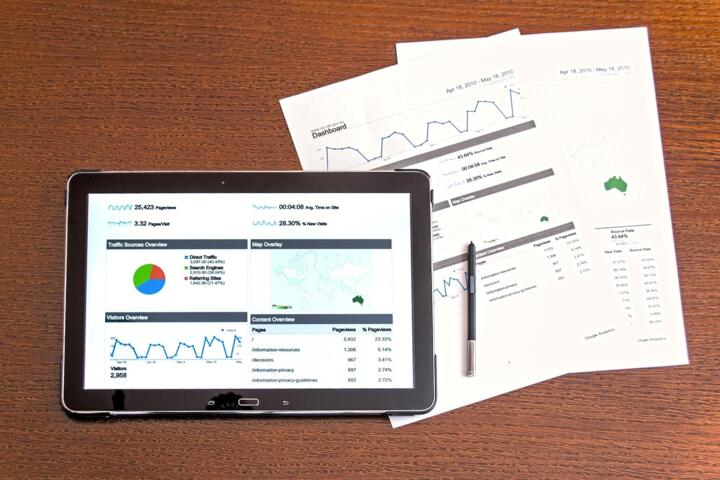In today’s digital-first world, organizations are producing more content than ever—images, videos, graphics, documents, and marketing materials. Managing these assets efficiently is critical to productivity, collaboration, and brand consistency. Without a centralized system, files get lost, duplicated, or mislabeled, causing delays, wasted resources, and frustration. This is where Digital Asset Management (DAM) software comes in. By organizing, storing, and providing easy access to digital assets, DAM solutions help businesses work smarter and maintain control over their digital content. This article explores why DAM matters, common challenges, key features, and practical guidance for selecting and using the right system.
Why Digital Asset Management Matters
The value of digital assets extends beyond their immediate use. They represent your brand, intellectual property, and creative investment. Poor management can lead to:

-
Lost Productivity: Searching for files across multiple folders or emails consumes valuable time.
-
Brand Inconsistency: Using outdated or incorrect versions of logos, videos, or graphics can confuse customers.
-
Compliance Risks: Many industries require proper documentation and usage rights for media assets.
-
Higher Costs: Redesigning or recreating lost assets increases expenses unnecessarily.
DAM software solves these problems by centralizing assets, tracking versions, and making content accessible to the right teams at the right time.
Common Challenges in Managing Digital Assets
Businesses face several recurring issues that DAM software can address:
-
Fragmented Storage: Assets spread across cloud storage, local drives, and personal devices create chaos.
-
Version Control Issues: Without proper tracking, teams may use outdated versions of files.
-
Poor Metadata and Tagging: Files without descriptive tags are hard to search and retrieve.
-
Inefficient Collaboration: Teams working in silos struggle to share assets and maintain consistency.
-
Rights and Compliance Management: Tracking licensing, usage rights, and expiration dates is complex manually.
Understanding these challenges helps organizations see why a DAM system is not just convenient—it’s essential.
Key Features of Digital Asset Management Software
When evaluating DAM solutions, consider these core features:
1. Centralized Asset Repository
DAM software stores all digital assets in a single, secure location. This centralization makes it easy to find, access, and distribute files.
Tip: Organize assets in intuitive folders and categories to simplify navigation.
2. Advanced Search and Metadata Management
Modern DAM platforms allow users to tag files with descriptive metadata, making search fast and accurate. Features may include:
-
Keyword search
-
Filters for file type, date, or usage
-
AI-powered image recognition
Step-by-Step Guidance:
-
Define consistent tagging rules for your organization.
-
Apply metadata during upload.
-
Regularly audit metadata for accuracy.
3. Version Control
Version tracking ensures that teams always use the most current file, while older versions remain accessible if needed.
Practical Tip: Set permissions so only authorized users can replace or update assets.
4. User Permissions and Access Control
DAM systems allow granular access control, ensuring sensitive files are only available to appropriate teams.
-
Marketing teams may access logos and brochures.
-
Legal teams can manage contracts or licensed media.
-
Freelancers or external partners can receive limited, time-bound access.
5. Collaboration Tools
Built-in collaboration features facilitate teamwork by allowing:
-
Comments and annotations on files
-
Task assignment for asset approvals
-
Real-time sharing and notifications
6. Analytics and Reporting
Some DAM solutions provide analytics to track asset usage, helping organizations understand which content performs best and optimize future production.
7. Integration Capabilities
A DAM system should integrate with other tools like:
-
Content Management Systems (CMS)
-
Marketing automation platforms
-
Project management tools
Integration streamlines workflows and ensures assets are accessible wherever they are needed.
Steps to Implement a DAM System Effectively
Successfully adopting DAM software requires careful planning and execution:
-
Assess Your Needs: Identify the types of assets you manage, the number of users, and workflow requirements.
-
Choose the Right Solution: Compare features, scalability, security, and integration capabilities.
-
Organize Your Assets: Audit existing files, remove duplicates, and establish a clear folder structure.
-
Define Metadata Standards: Consistent tagging ensures searchability and retrieval efficiency.
-
Train Your Team: Provide onboarding and ongoing training to ensure proper use and adoption.
-
Set Governance Policies: Define roles, permissions, and approval processes to maintain control over assets.
-
Monitor and Optimize: Regularly review usage patterns and workflows to improve efficiency and ROI.
Benefits of Using Digital Asset Management Software
Organizations that implement a DAM system can enjoy several advantages:
-
Time Savings: Employees spend less time searching for assets and more time on productive tasks.
-
Improved Collaboration: Teams can work together seamlessly, regardless of location.
-
Consistent Branding: Centralized assets ensure that marketing materials always use approved files.
-
Better ROI on Creative Assets: Tracking asset usage prevents unnecessary re-creation of content.
-
Regulatory Compliance: DAM helps maintain proper documentation and usage rights, reducing legal risk.
By turning chaotic storage into a structured, accessible system, businesses can leverage their digital content strategically.
Conclusion
Digital Asset Management software is more than a storage solution—it is a critical tool for modern organizations seeking efficiency, collaboration, and brand consistency. From centralized storage and metadata management to version control, user permissions, and analytics, DAM platforms streamline workflows, save time, and maximize the value of digital assets.
The key takeaway is that investing in a robust DAM system allows teams to focus on creativity and productivity rather than administrative chaos. By selecting the right software, implementing clear processes, and training staff effectively, organizations can transform their digital content into a powerful strategic resource that drives growth and strengthens brand presence in a competitive digital landscape.
